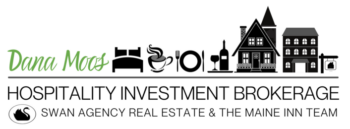These three letters are one of the most important elements to understand when looking to finance a business (and let’s not forget that an inn IS a business). Simply, can the net operating income cover your debt as new owners?
Because although many buyers ask if the sellers have a mortgage, it really doesn’t matter. All that does matter is that if you will, you can cover yours?
When we look at a property’s profit and loss statement, we look for certain operating expenses that are “controllable”. Can you as new owners, eliminate some of these expenses by doing things differently? This is always something the lender will be interested in, and you should be as well. The largest expense is often payroll. Is this an inn run by one innkeeper instead of a couple? And if so, does that single innkeeper have additional staff on payroll to assist in the innkeeping duties that a couple would otherwise be able to do away with? And are there housekeeping staff on payroll? Some innkeepers decide to handle housekeeping themselves, keeping payroll down. If you are a single innkeeper and the inn is being run by a couple, you may want to consider adjusting some of the expenses upward a bit to cover additional costs should you find that you need to hire staff to help you.
We then come up with an adjusted net operating income (NOI) based on any expenses we revised based on the way new innkeepers intend to run the business. So how large of a mortgage will the bank give a buyer based on the numbers? As a very general rule of thumb, banks like to see a DCR of 1.28. This means that the NOI should cover the debt service and have a surplus of 28% after the mortgage is paid. This is the minimum before owner disbursements (not owner payroll if on staff instead of hired help). This is what you have left for your personal use.
Of course a buyer’s financial statement may affect the bank’s DCR requirement if they feel you have enough reserves to fund any potential deficit should the business unfortunately realize one.
How we arrive at this ratio is simple. It is the NOI ÷ debt service = DCR. For example: if the NOI (which is gross revenue minus operating expenses) $75,000 and your mortgage will be $60,000, the DCR is 1.25. This tells the lender that the NOI is not quite high enough to give that 28% surplus.
So what you may need to do in this case is review the operating expenses again to see if there’s anything else you can trim; review your future income projections to see how you’ll get the income up; and the bank may feel that your personal financial statement is strong enough to fund the loan with that DCR because you have the cash reserves to subsidize the business. But, how long will it take you to get the income up to where you see a positive cash flow? Therein lies the risk that you take but so does the bank. And banks do not like taking risks.
Are there certain circumstances which can be attributed to the lower NOI? Is the inn only open seasonally in an area which could benefit by having the inn stay open most of the year or all year? Was the inn open year round for many years and then the current owners decided they only wanted to stay open seasonally because they could afford it? So would the historical financials indicate that the property could once again bring in higher income? Good possibility. This situation could put the inn in the financially feasible category.
If we look at a business with a stronger NOI of $93,000, your mortgage of $60,000, we have a DCR of 1.55. This looks much better, to you and the bank! This leaves you with a cash flow of $33,000. This could be considered a financially viable business. This is, after all,
It’s important to work with an educated broker who enjoys educating buyers!


